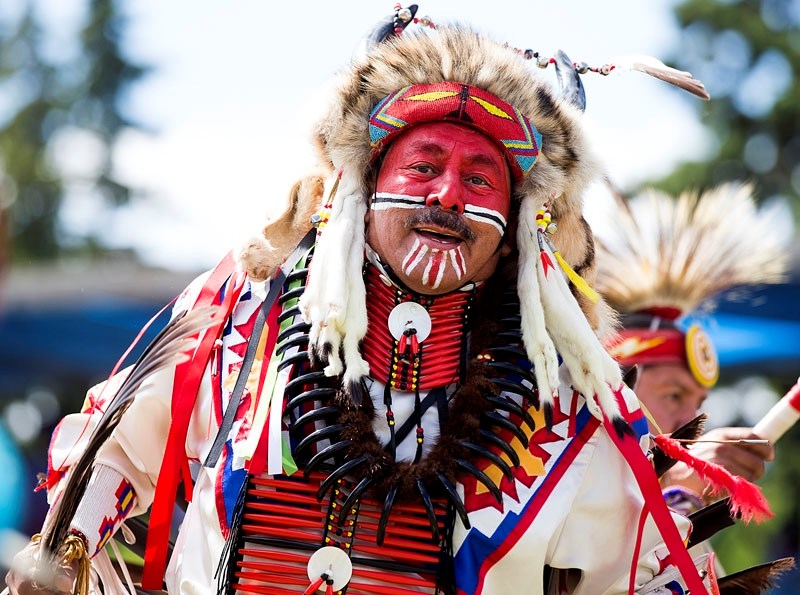It's powwow time again at Poundmaker's, and this year there will be a special guest: the Church.
Up to 5,000 people are expected to turn up at the annual Poundmaker's Lodge powwow this August 6 and 7 just outside of St. Albert on Poundmaker Road.
The long-running event is a celebration of First Nations song, dance, and culture, and features artists from across North America.
Poundmaker's has dubbed this year's event the Journey to Healing Powwow as part of the national campaign to heal the wounds caused by Canada's residential school system, said powwow organizer Lacey Kaskamin. This is the first powwow they've held since last year's release of the Truth and Reconciliation Commission's report on residential schools.
Poundmaker's is built on the site of the former Edmonton Indian Residential School.
For the first time ever, Poundmaker's has invited leaders with the St. Albert United and Anglican churches to participate in the event's grand entry.
It's all part of the reconciliation process, Kaskamin said.
"We're trying to get involved with them and let them know our powwow is open to anybody."
Rev. James Ravenscroft of the St. Albert United Church is among those leaders invited. He said this wasn't his first powwow, but it would be his first time at the Poundmaker event, and his first time in the grand entry.
"I feel very honoured to be invited and to participate in this powwow in this way," he said.
"I think it says a lot about Poundmaker's as a community and their own desire for a new relationship with non-indigenous people to be formed."
Festival and prayer
Many people come to powwows to heal, celebrate, and connect with others, said Adrian LaChance, a veteran powwow dancer with Running Thunder Dancers in Edmonton. He said he's excited that the Anglican and United Church will be at Poundmaker's, as those groups had great influence over the residential school system.
Next week's powwow will feature a variety of First Nations dances, including the chicken, jingle, fancy, and grass dances, performed by some 700 competitors, Kaskamin said. Some events, such as the ironman, will feature prizes.
This is the second time that the powwow has done an ironman, which is meant to raise interest in powwows, Kaskamin said. In it, up to 30 dancers will take to the field at once to do the high-energy fancy dance for as long as possible.
"Their feet need to be constantly moving to the beat of the drum," she said, and you're disqualified if you look too tired. Last one standing wins a new car. Last year's winners managed to dance for 30 minutes.
LaChance will be performing a warrior or hunter dance at the powwow. The dance originates from the Sioux tribe, and has dancers in full face-paint and regalia perform strong, purposeful, stealthy movements that resemble a man on a hunt.
To put on one's regalia is to awaken one's spirit, LaChance said.
"It's almost like I'm transformed."
First Nations people would not be performing these dances today if the government and the churches had succeeded in their goal of assimilation, LaChance said.
"When we dress up, we're telling the spectators, we're telling our children, that we are still here, we're still strong."
The powwow is free to the public, with overnight camping and parking available on site, Kaskamin said. Drugs, alcohol, and dogs are not permitted.
The powwow runs from 1 to 11 p.m. both days, with grand entries at 1 and 7 p.m. Call Kaskamin at 780-458-1884 for details.




